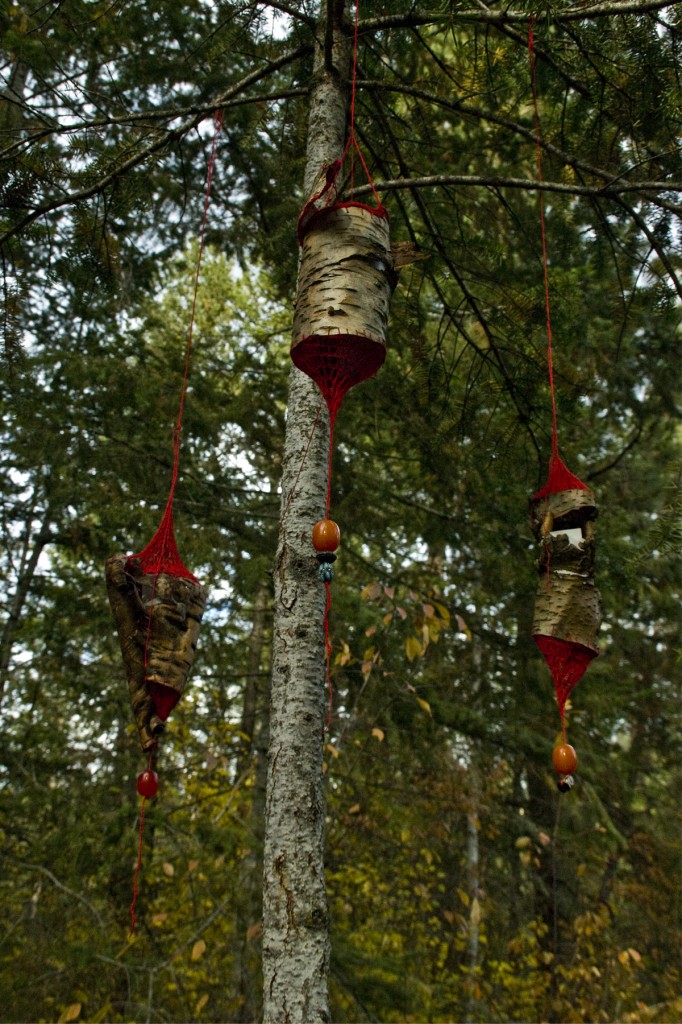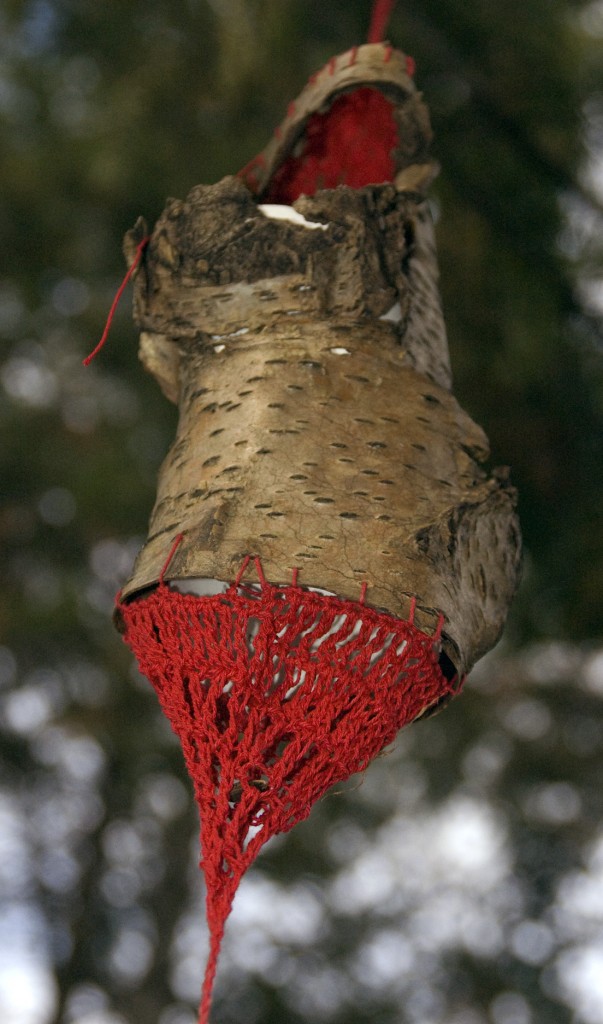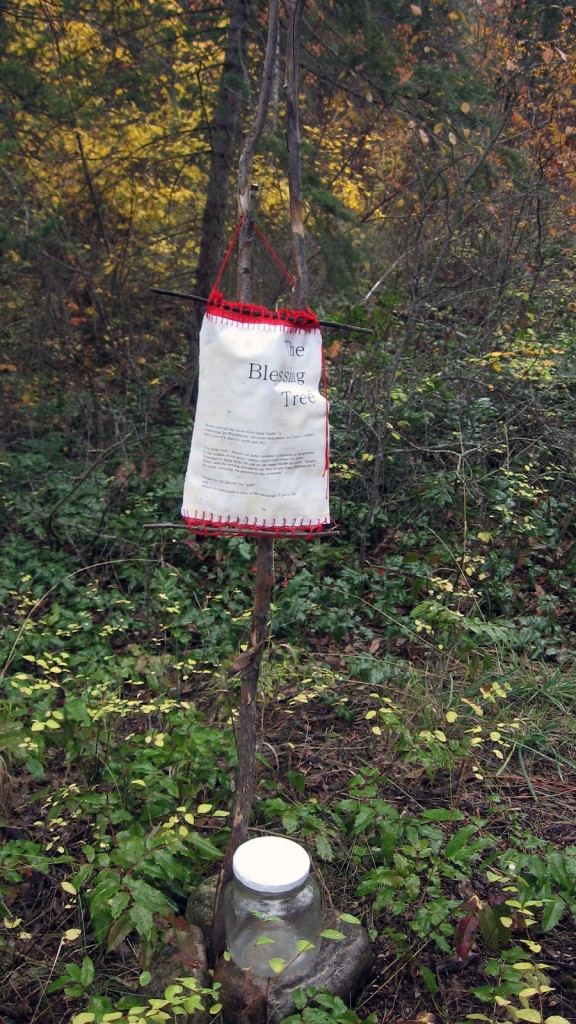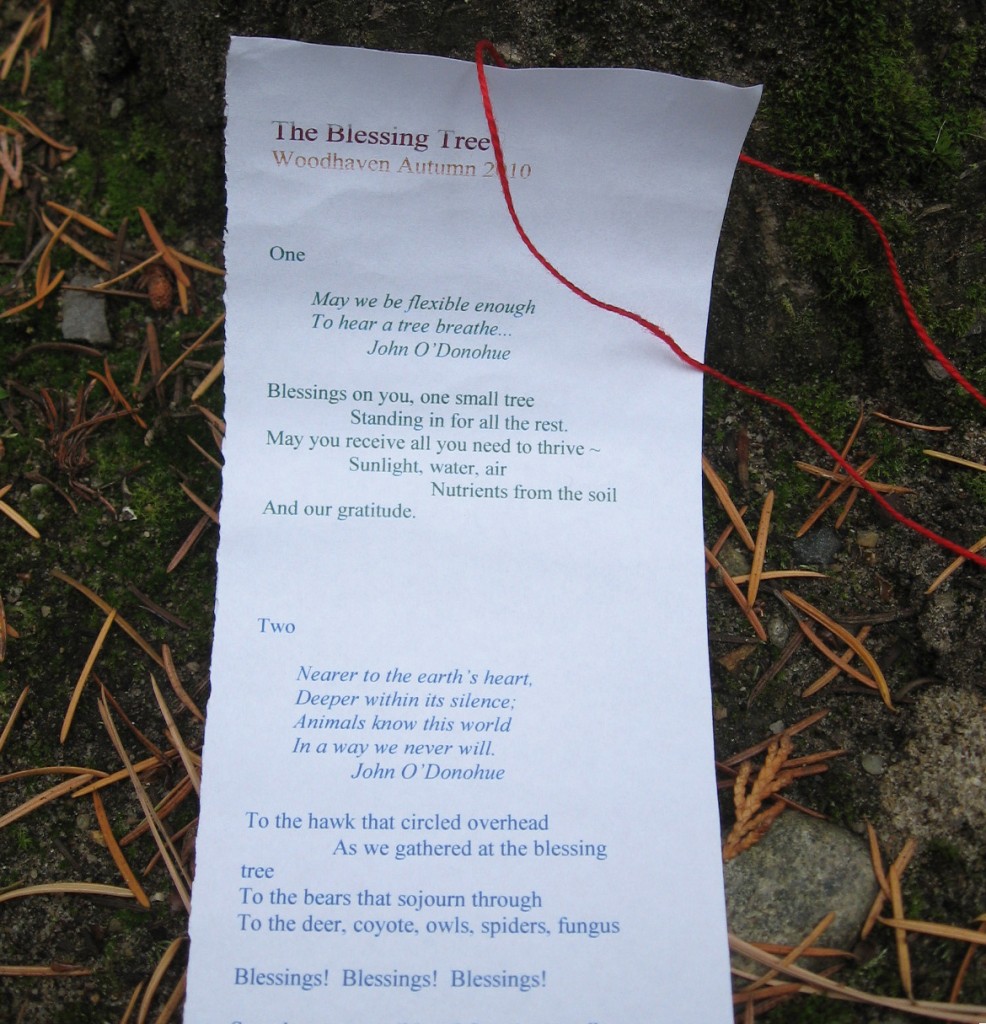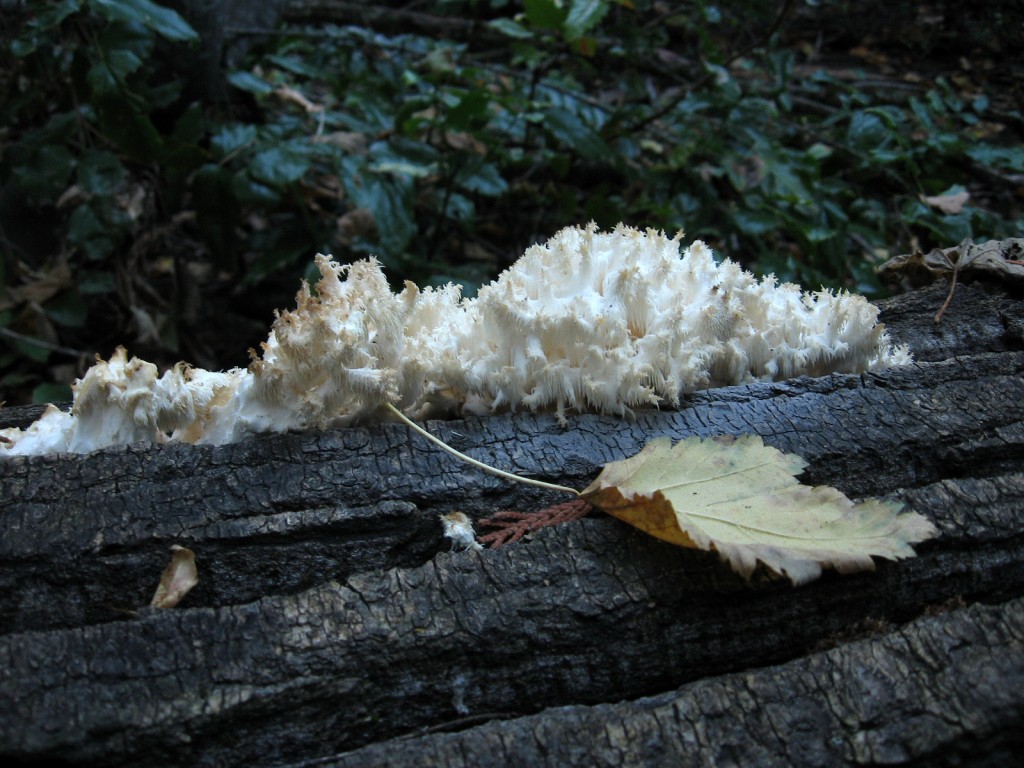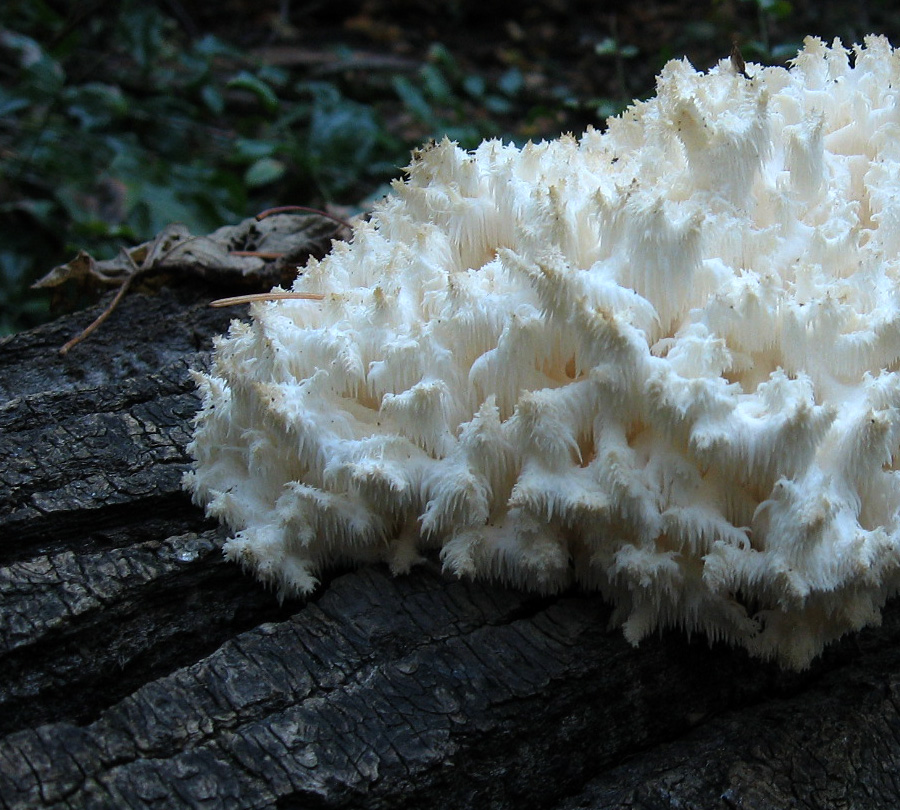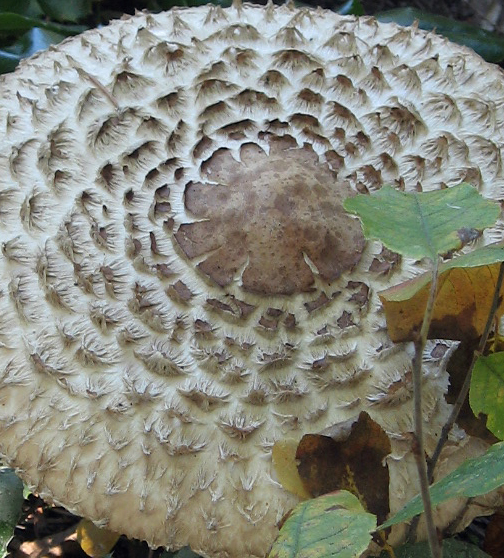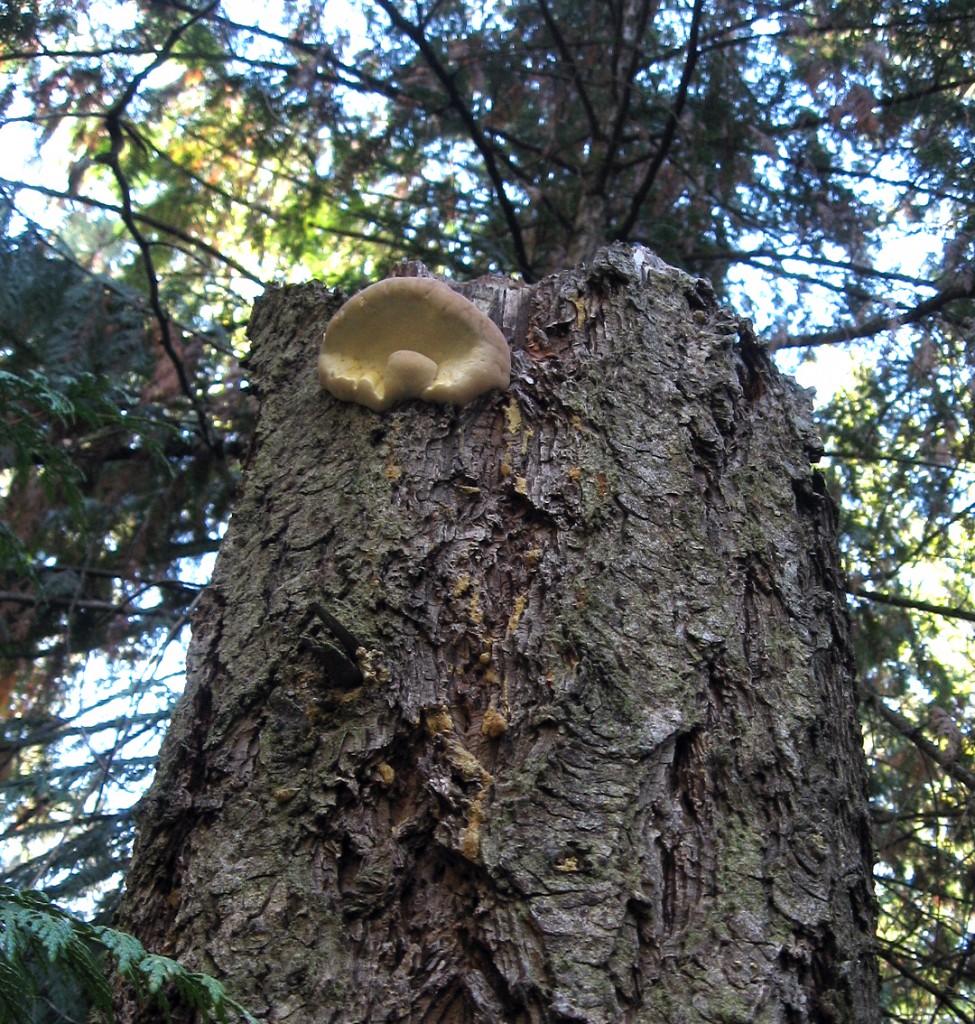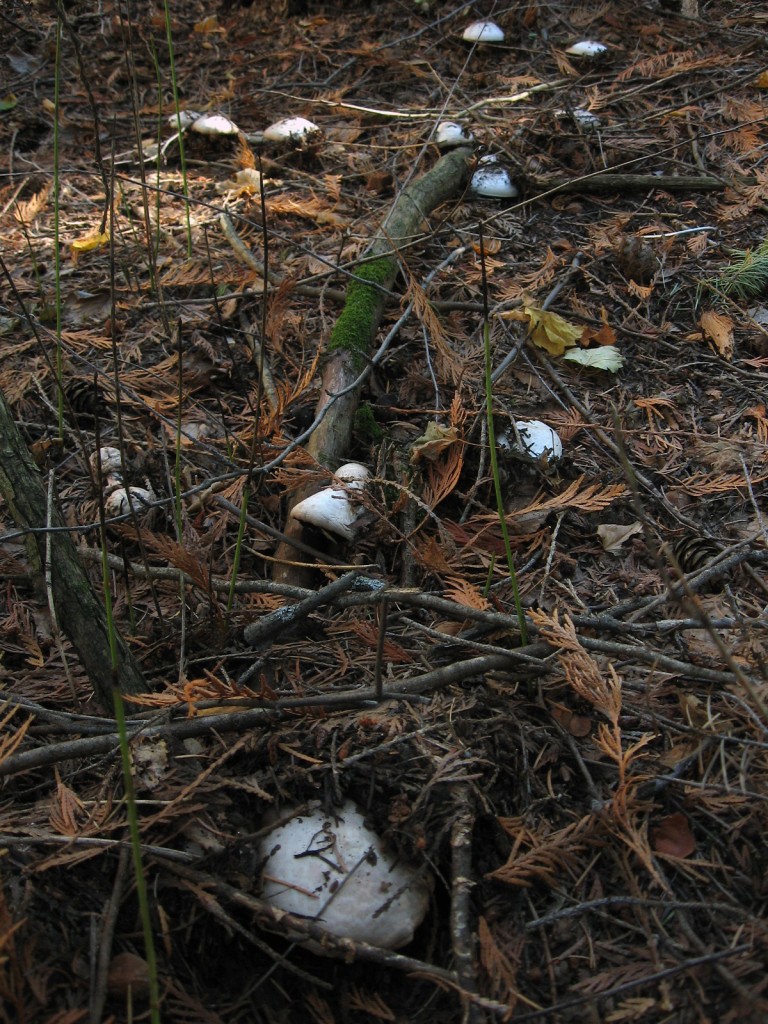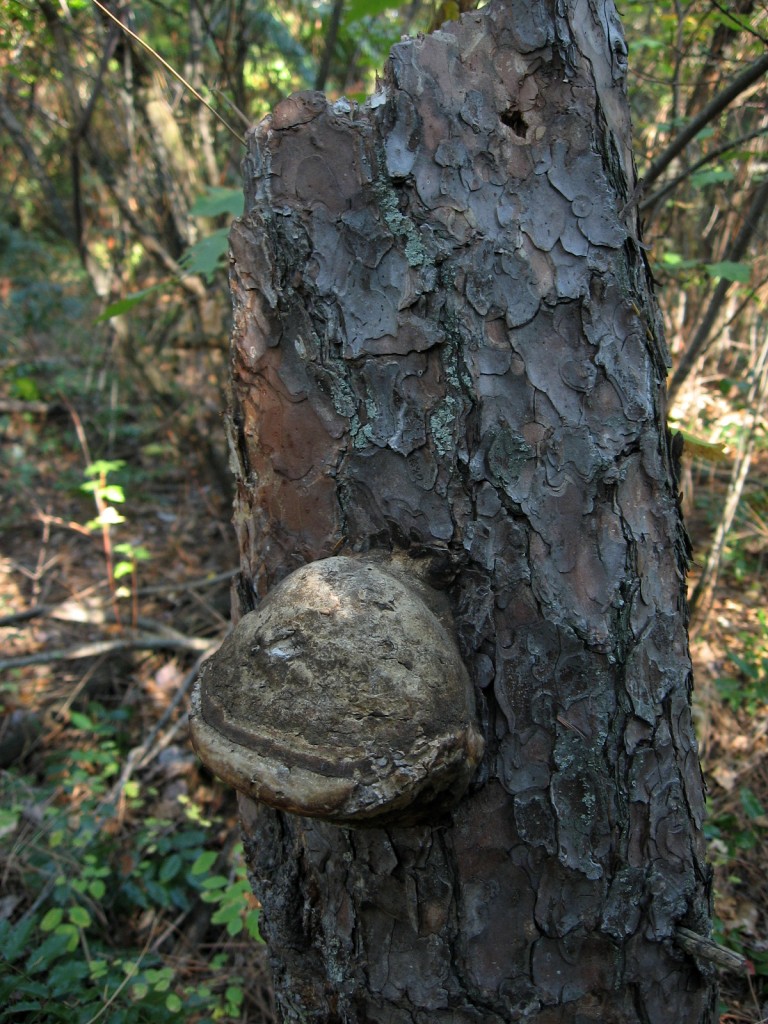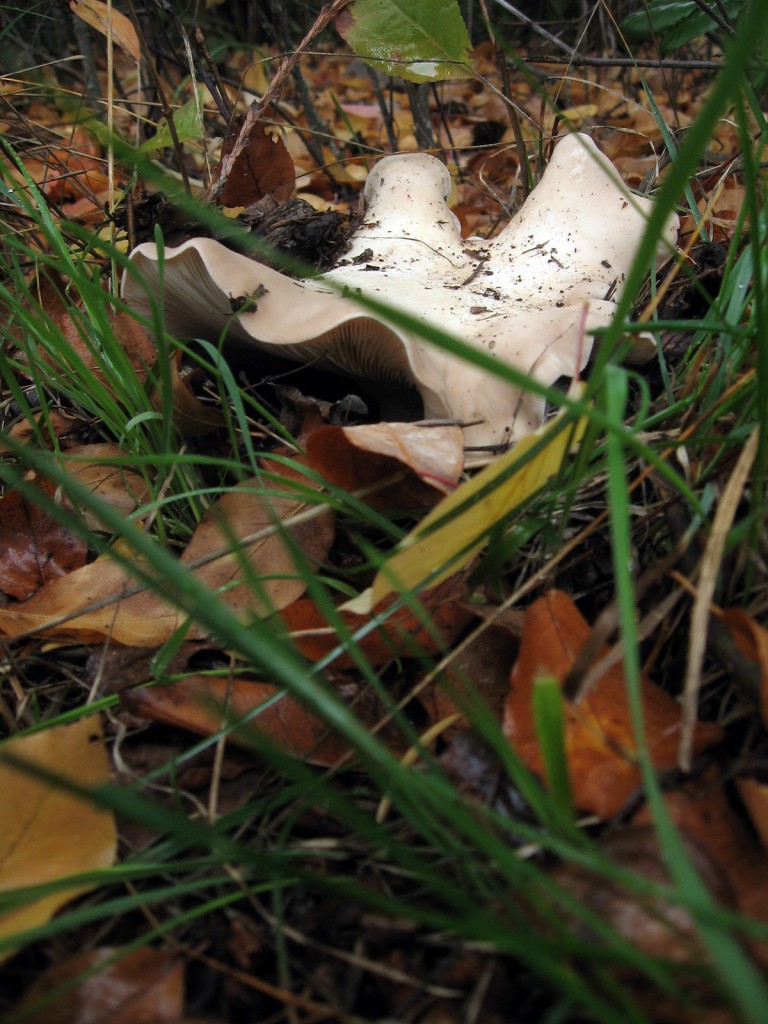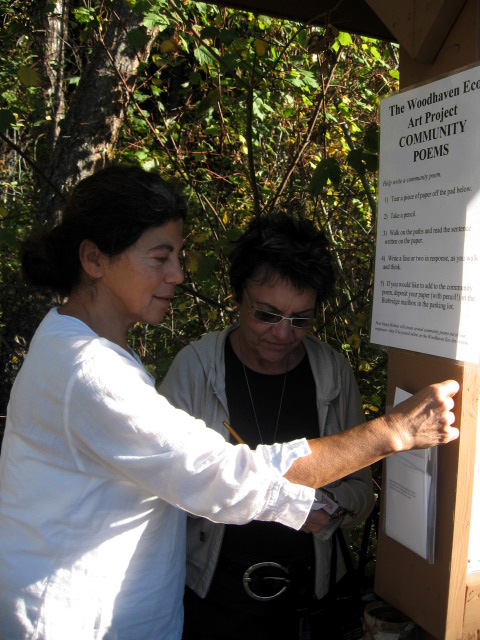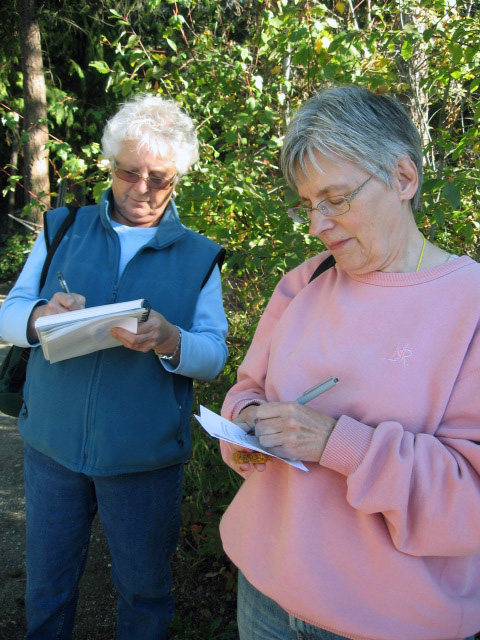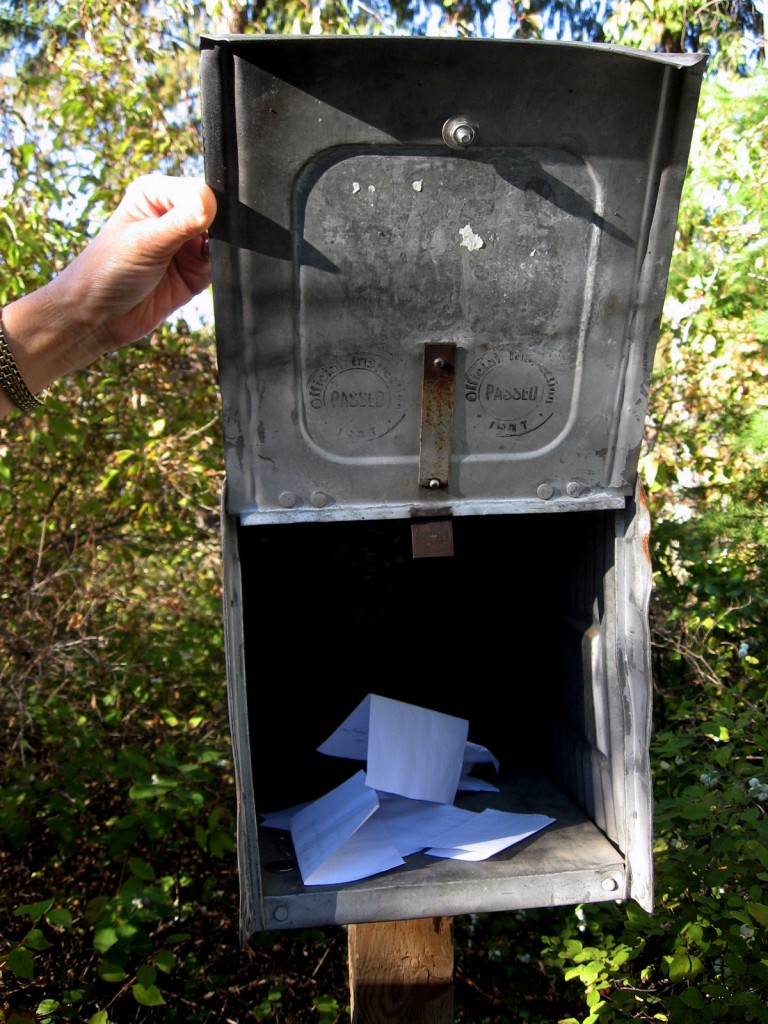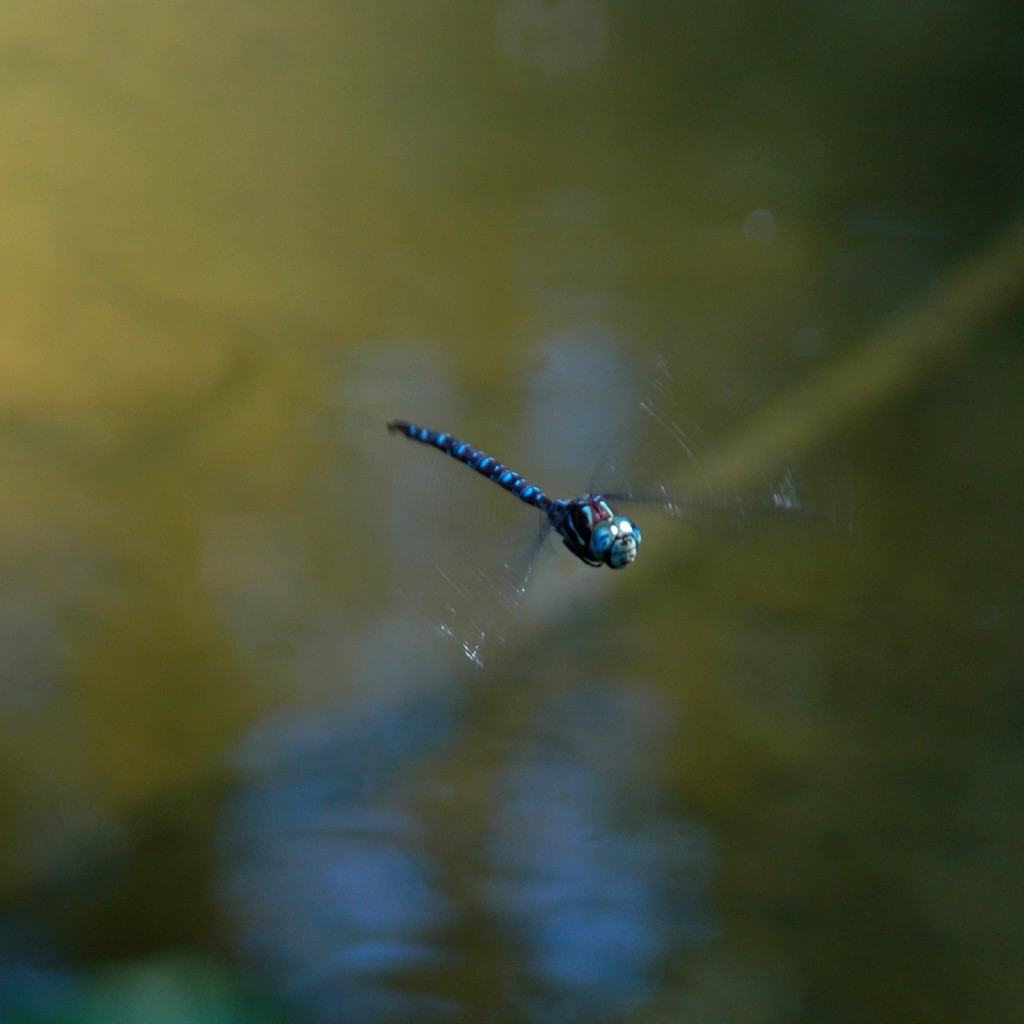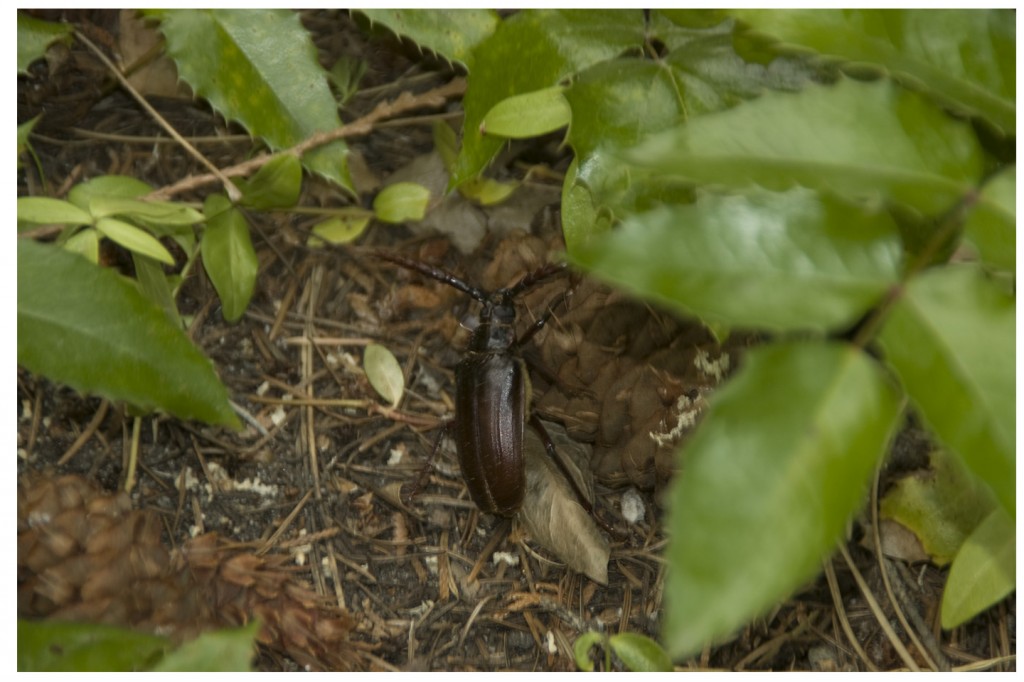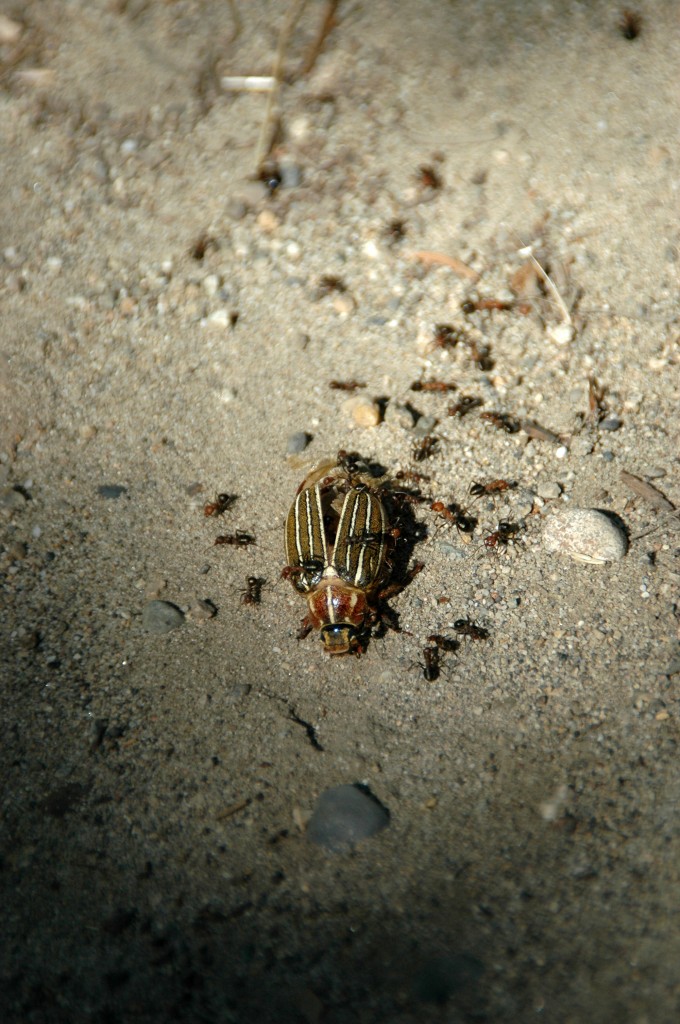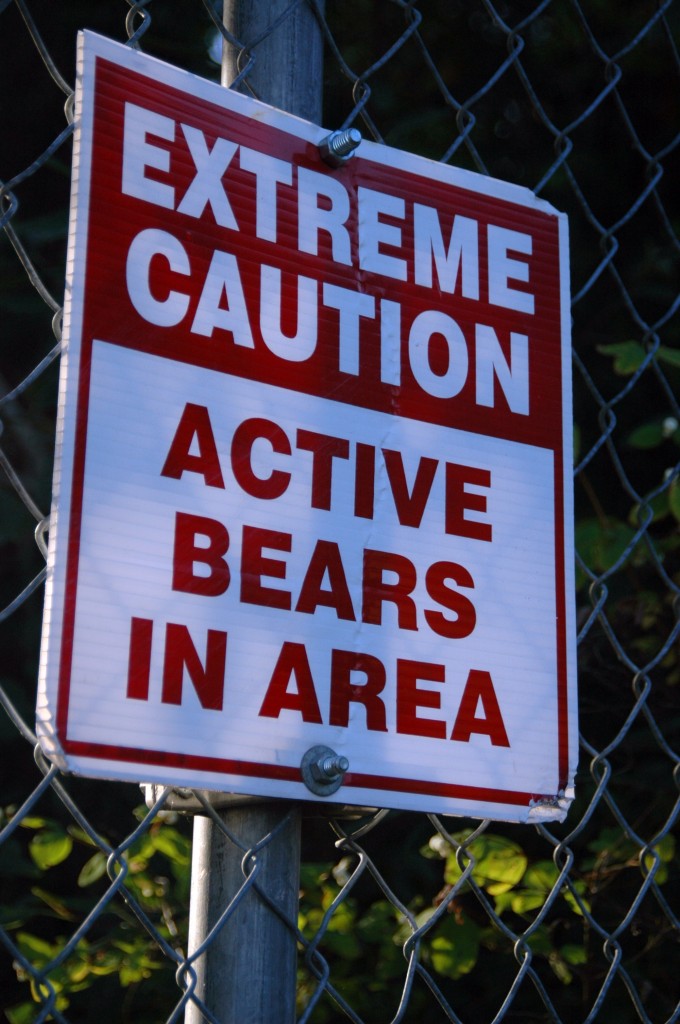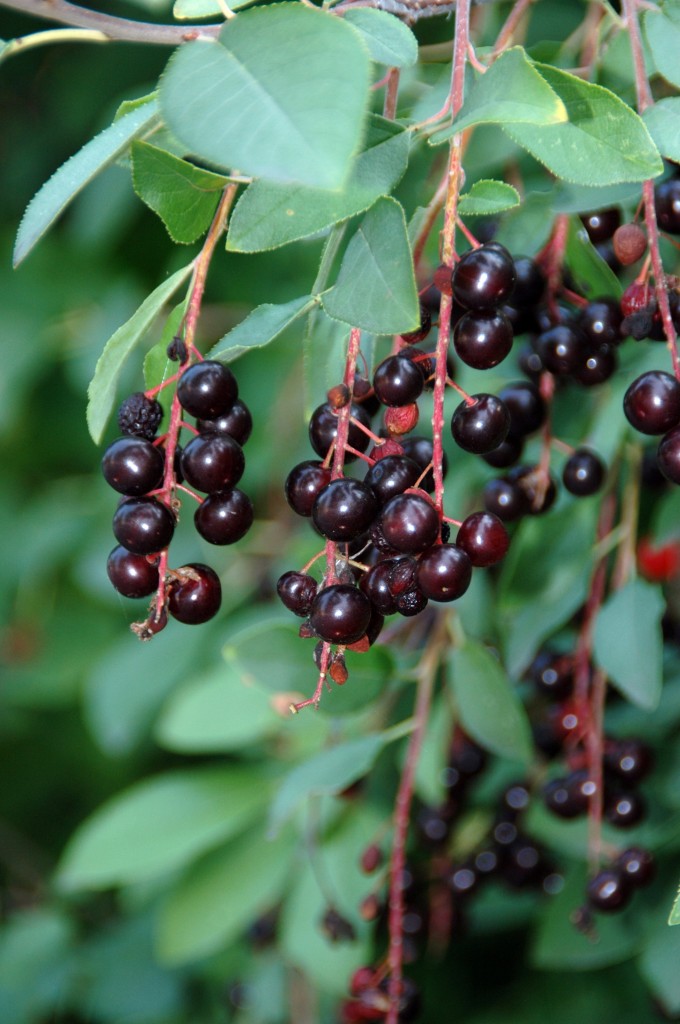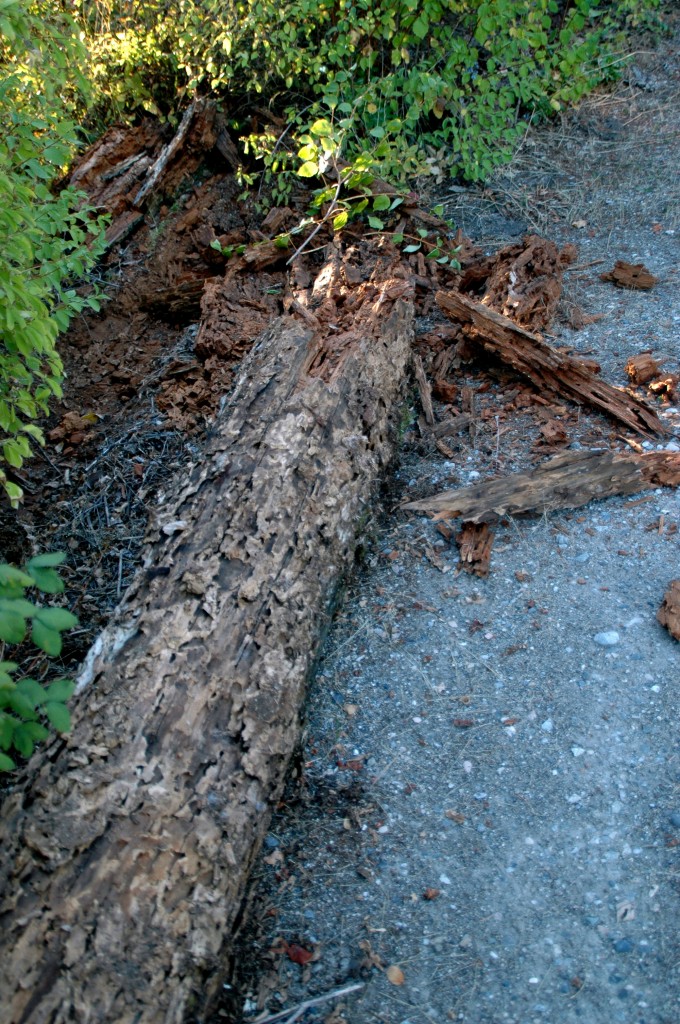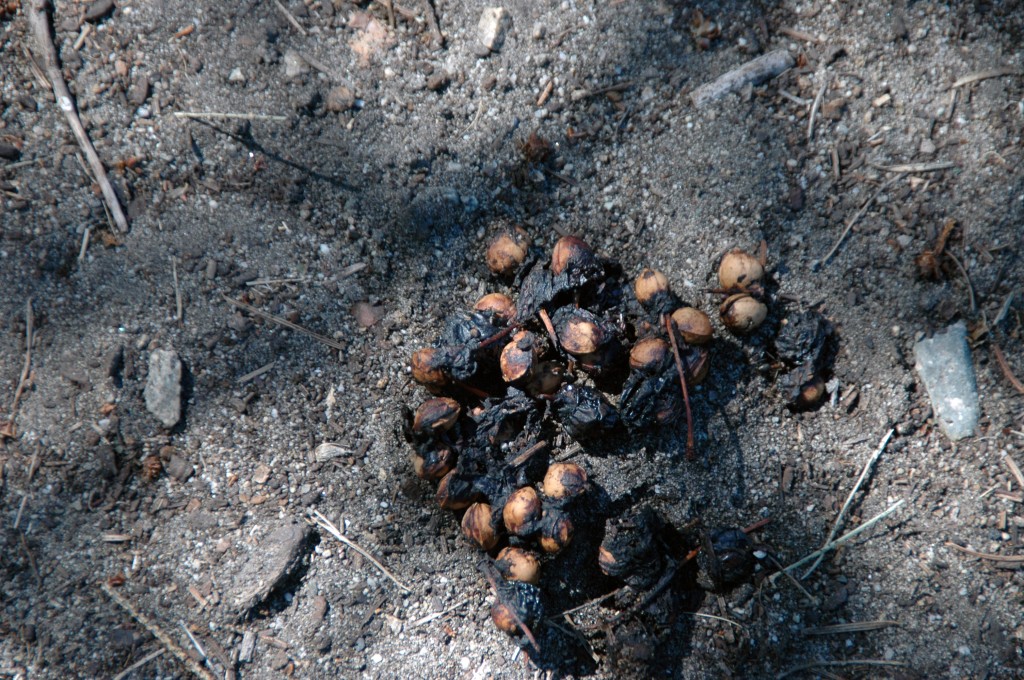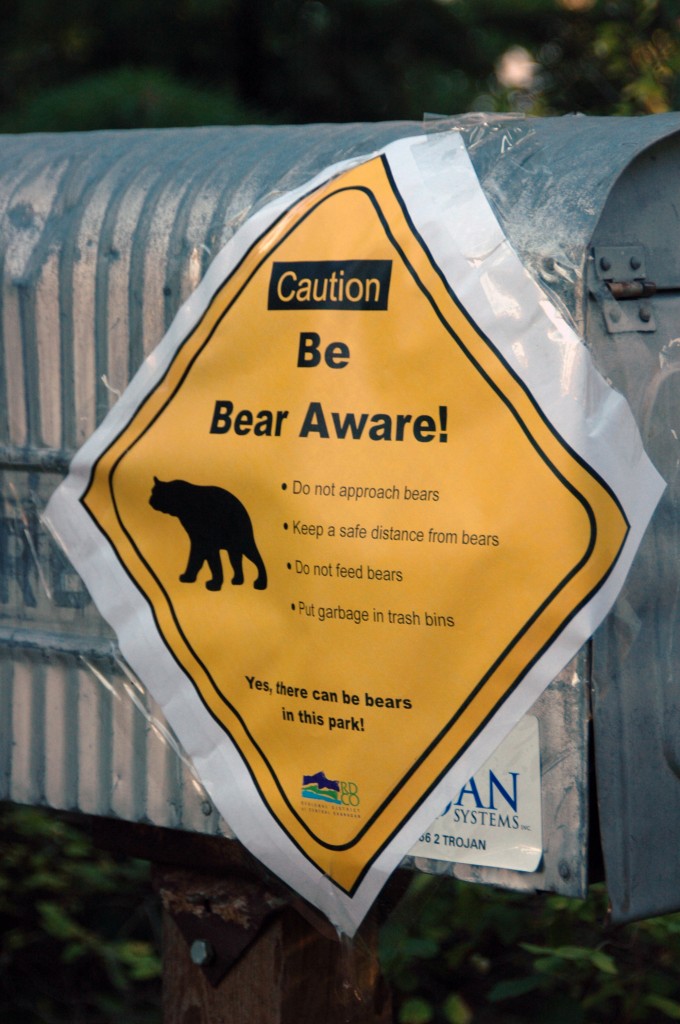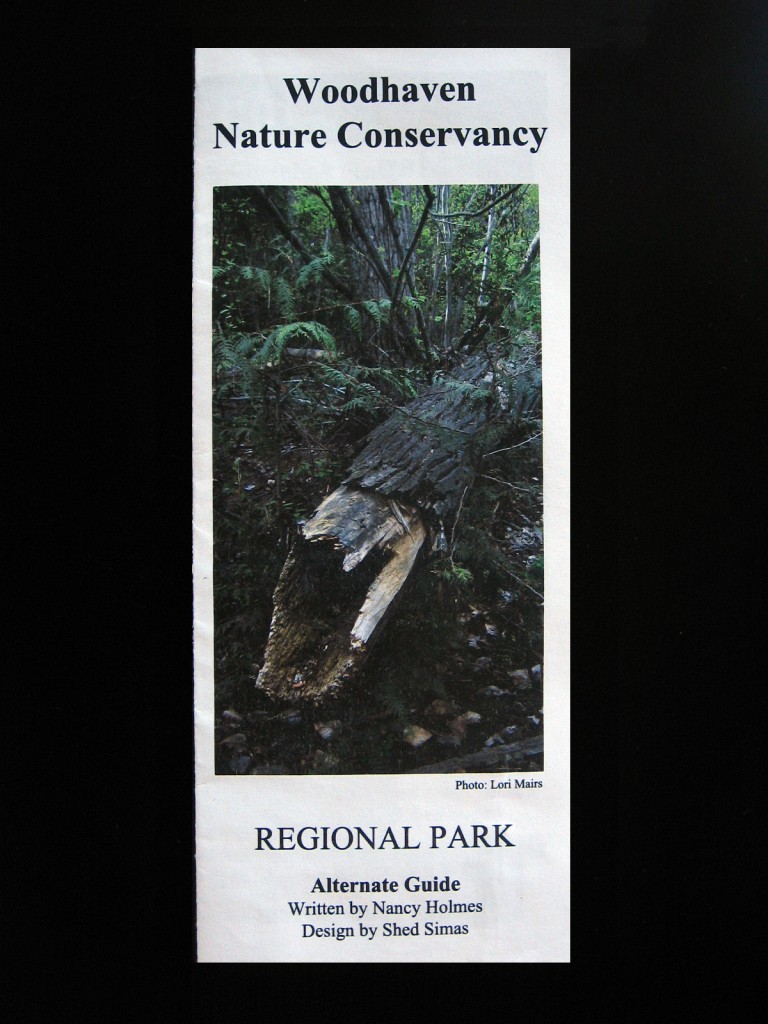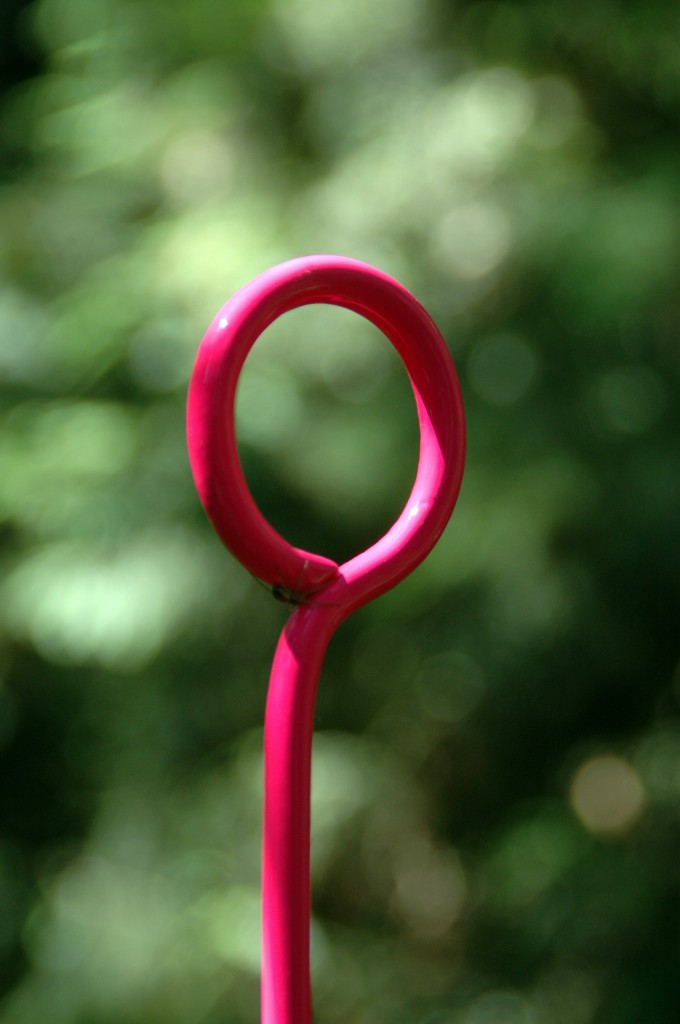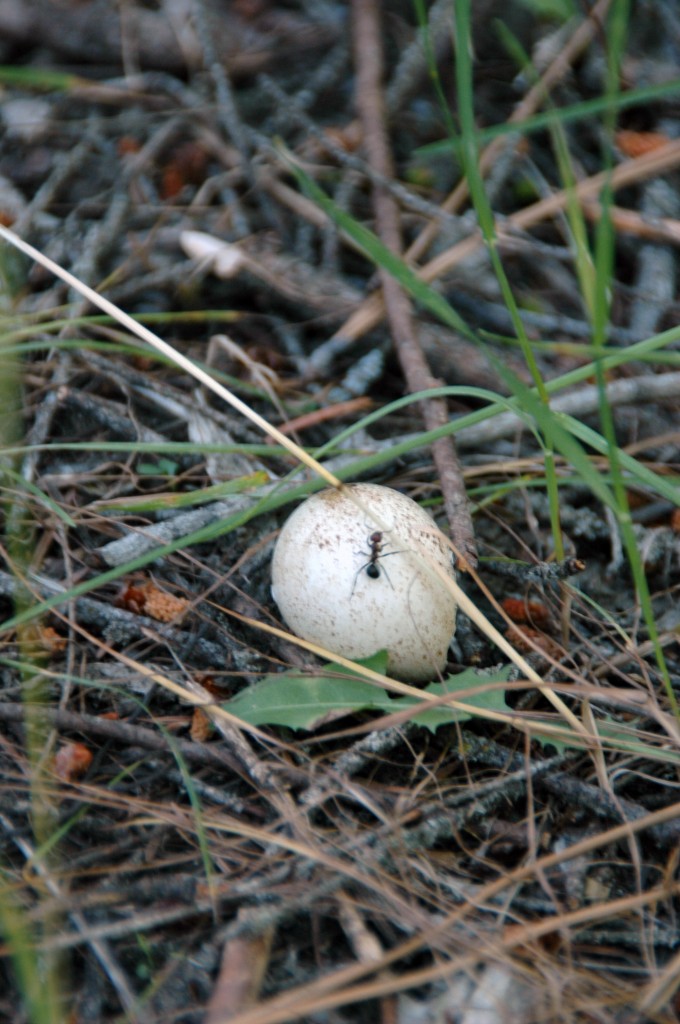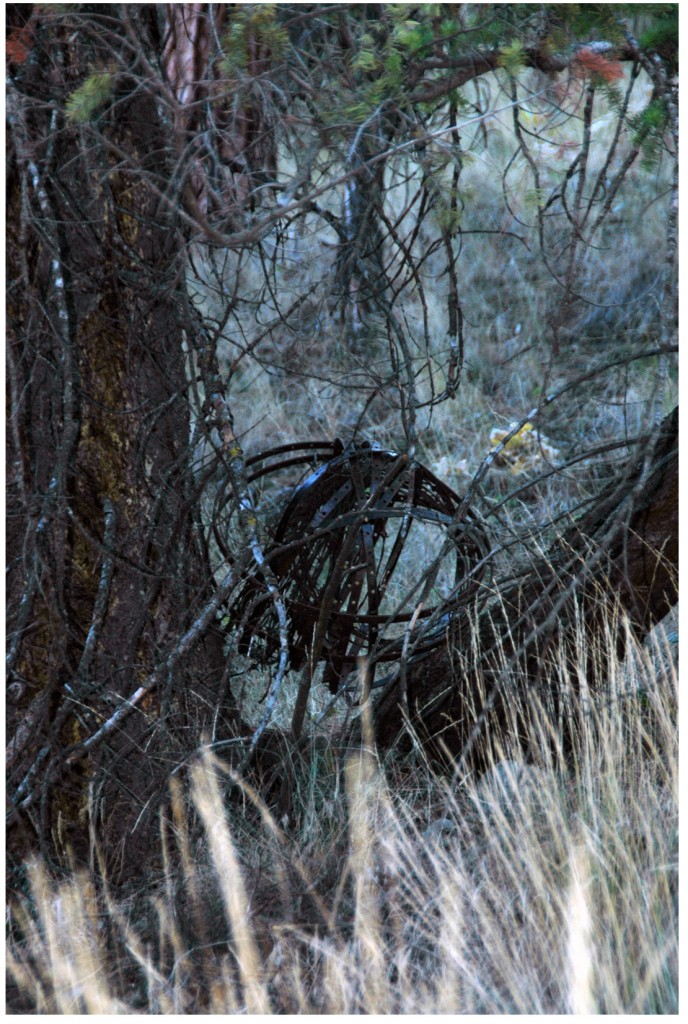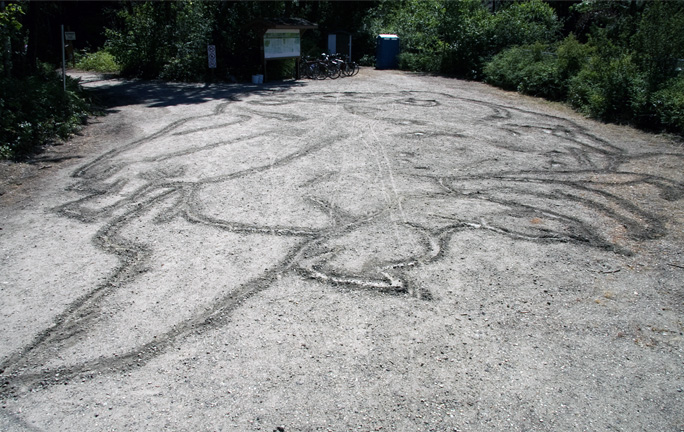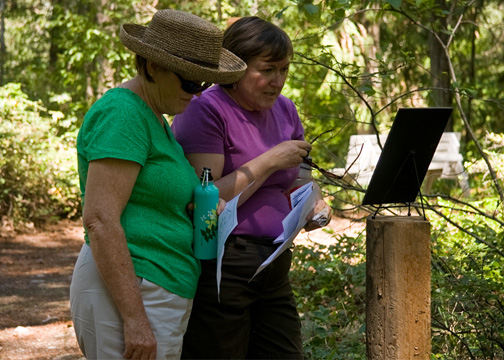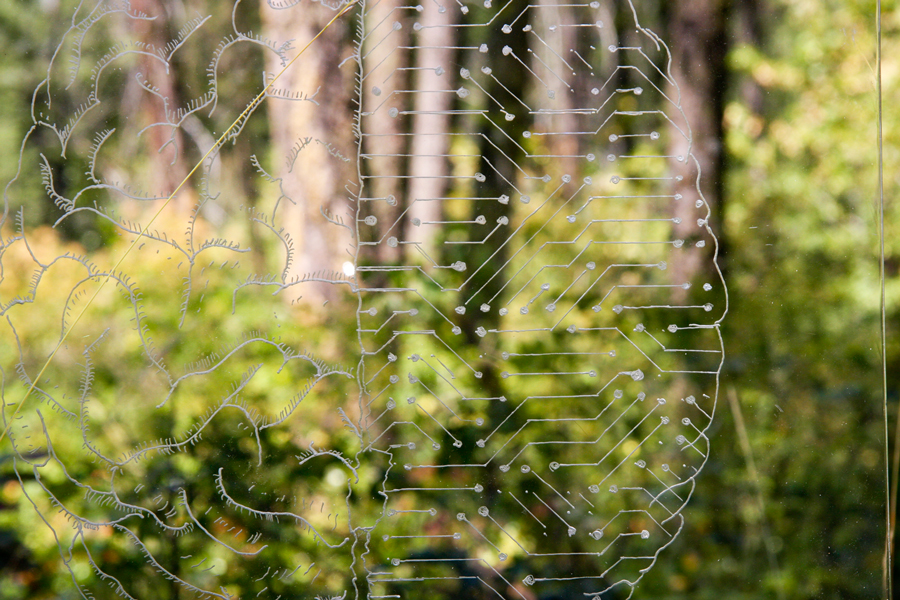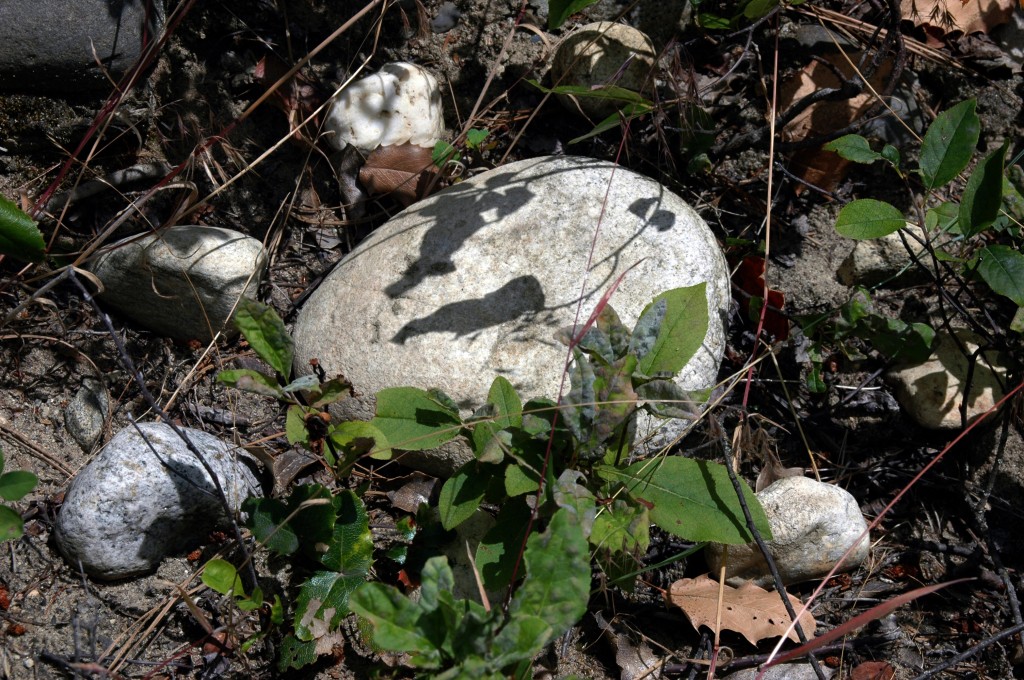
If you entered the dark rich hallow of the cedars on October 24 during the opening of the Fall Projects you would have come upon the poetry of Nancy Holmes in the form of living performance. Students from UBCO brought Fallen Trees (one of the 12 poems for Woodhaven on the fence line) alive in their piece, Whispers of Woodhaven.
I am a sculptor, I make three dimensional objects. I intend movement, sometimes sound, even smell and taste enter the work on occasion. Mostly my work is a stationary object installed for a viewer to observe. Performance art is an entirely different practice. It is truly a sight to behold and one I have come to appreciate more than ever over the past eight months.

Mallory Gallant, Kelly Young, Natalia Hautala and Tyler Hansen dressed as if they were on a forest hike or a Sunday nature walk. They recited the poem in a stage-like arena bordered by downed cottonwoods and cedar. Each student took a piece to recite. Sounds simple oui? Far from it. The performers became the trees. They were alive and dying, wanting and needing, giving and receiving, tormented and calm.
These four students managed to create a disjointed harmony of sorts that was fastened by the threads that stitched the words together. With each contorted grimace and tipping and sway of limbs, with every outstretched appeal to the sky or the earth, and with a final collapse to the forest floor the poem became a living, breathing, wanting thing alive in the moment then gone.

Performance art is a beast all its own. It relies on interpretation and a certain amount of disassociation, I would imagine, to remove the “self” from the work and fully engage with the idea.
Watching performance art is different from viewing a stationary object or keeping up with the visual pace of new media art. Performance art is there – and gone. As a viewer you’d miss a great deal if you weren’t fully engaged in listening, watching and silencing your mind. Being authentic and focused is essential, observation takes work. I am so glad I had the opportunity to see this piece performed. I watched trees become animate, I heard the voice of plants, I witnessed them move, shake, twist, bend and fall. But most of all I felt like I was let in the side entrance to the theatre that is Nancy’s awareness and her private observations and concerns for the land. Her secret Woodhaven came alive.
Woodhaven is closed until April 1 2011. I will continue to blog the remainder of the Fall and Winter Projects and will give critter updates and report on anything else of interest in the forest for those of you who care to know what goes on here in the deep of winter.
